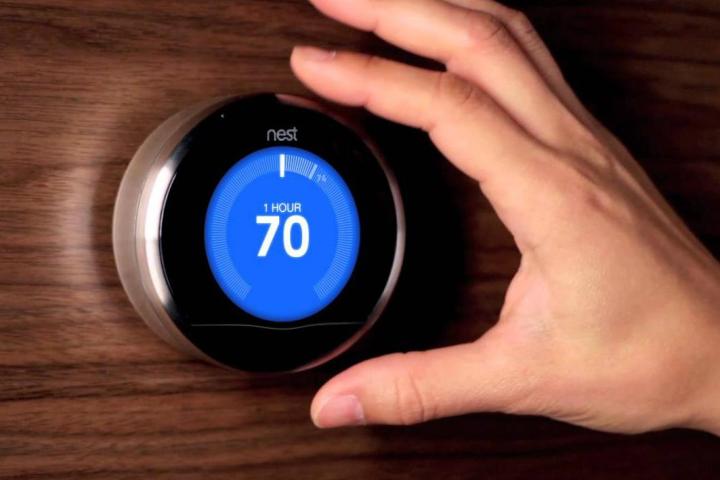
But despite its air of inevitability, “convergence” still hasn’t been realized. Your fridge is still just your fridge. That could all be about to change, though, if the folks behind Thread have anything to say about it. Launched today by a formidably large consortium of well-funded tech companies calling itself The Thread Group, it’s is a low-power, wireless mesh network protocol for connecting products in the home.
What in God’s name does that mean? Well, if you want the ceiling fans to turn on when the thermostat rises or to get a text when the laundry’s done, then every one of those devices and appliances needs one single way to talk to every other device and appliance. But what’s the best way? And who decides? It would be a pretty straightforward problem to solve if, say, a single world-dominating company dictated how every manufacturer on Earth makes its stuff.
We’re not quite in that situation, but we do have Google. And it’s Google, through its subsidiary Nest, that has assembled a standards-war-preempting posse that includes ARM (the company behind the processors in virtually every smartphone on the planet), Samsung, Tyco, Freescale, Yale, Somfy, Silicon Labs, and Qualcomm. Big Ass Fans bellied up to that bar, too.
Together, this crew has pulled together a fast-growing network of hundreds of other affiliate and contributor companies. As a roster, it reads like a CES sponsor list, with each of these companies committing to supporting the Thread protocol. It’s a major shot across the bow of related networking protocols like Zigbee, Z-Wave — even Bluetooth. But what about the tech itself?
As a decentralized mesh network, Thread is resilient by design. The protocol lives on each connected device, which means there’s no single point of failure, like a string of Christmas lights rewired into a web. If one device on the network fails, communications are just routed around it.
That’s especially important, because Thread wants to invite pretty much every device in your home to the party, from the big AC-powered appliances in the basement to the little battery-operated gadgets lost between the couch cushions. According to materials provided by The Thread Group, the new protocol is built on a 6LoWPAN foundation, which means it’s designed to connect even the smallest and simplest devices to each other; to the Internet; and, by extension, to your PC, your smartphone, your Apple Watch, etc.
A certification program is slated to go live in September, which will give a far larger range of manufacturers the chance to slap a Thread logo on their products. Plus, the group says, existing products with wireless connectivity using the 802.15.4 protocol (that’s most of them) can be added following a straightforward software update.
Potentially, that’s a lot of stuff on your network, and The Thread Group says each install is structured support an environment with up to 250 wifi-enabled devices.
It’s also a big temptation for cyber-mischief. Because nobody wants a malevolent hacker turning their home into a malfunctioning nightmare, Thread promises “banking-class” security and a “smartphone-era authentication scheme,” but pretty much leaves it at that. It also claims to have used AES encryption to close security holes known to exist in other mesh networks. AES is a so-far-unbroken industry- and government-standard specification for protecting data (although Snowden documents reveal the NSA is trying its best).
It remains to be seen whether Thread will replace or augment long-established players in the wireless connectivity space. The new technology broadcasts over the same band as Zigbee and Z-Wave, and both companies have been noticeably noncommittal in their responses to the announcement.
It could be that those two companies, both of which have struggled for years to expand their reach beyond tech hobbyists and the luxury market, might stand to gain from having Thread pry open a vast and largely untapped market for mid-range home automation. Of course, it could also be that Thread is not the first attempt to define a universal standard for residential connectivity, and it certainly won’t be the last.
In any case, the group says Thread-enabled products could hit the market before year’s end. Stay tuned.
Editors' Recommendations
- Home Depot’s Hubspace is a great way to start building your smart home
- How to use the Google Home app on a computer
- How to prevent your Ring smart camera from being hacked
- Nest Hub Max vs. Skylight Cal Max: Which is best for your home?
- The 5 best smart ceiling fans for your home in 2024


